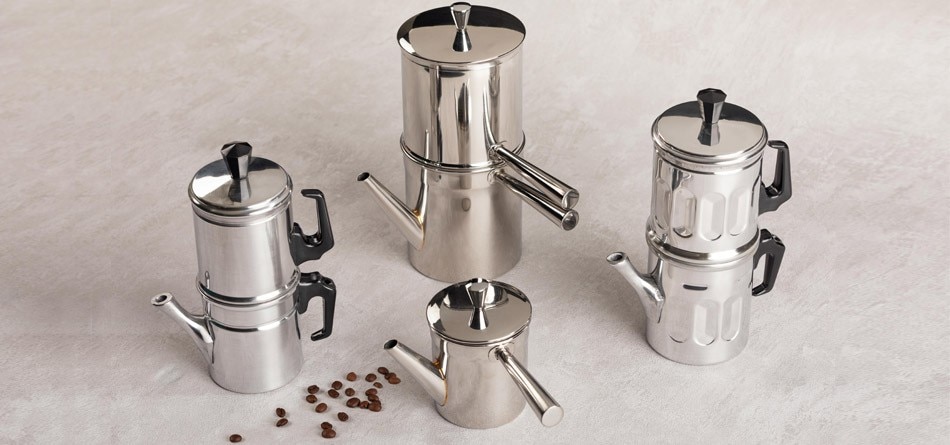Since its inception, the coffee maker has stood out as an industrial product capable of bringing entire families together under the signature of an architect or designer. Seduced by this possibility, many have transformed this household staple, tailoring it to their personal vision and design.
Over the years, the espresso coffee maker has thus become a symbol of technical and cultural identity and a true paradigm for interpreting broader gastronomic patterns.

This charming object is the perfect combination of form and function, and carries an age-old ritual that finely blends sensory and technical experience.
At home, an espresso just like at the bar
In the early 1900s, the coffee pot – an everyday object that transformed a few simple gestures into a valuable ritual – brought modernity into our homes, embracing progress.
Coffee thus went from being an exclusively public ritual to being an intimate part of everyday life too.
Although the very first stovetop coffee machine (the Neapolitan flip pot) was created by Morize in 1819, it was not until after World War II that it actually became an industrial product.
“A casa, un espresso come al bar” (At home, an espresso just like at the bar) is the slogan that made Alfonso Bialetti’s Moka Express famous – the home espresso coffee maker with the unmistakable little man with a mustache printed on its side.
This consumer item soon became the central element in an ecosystem of domestic architecture (teapots, cups, mugs, kettles) designed to make the coffee experience as idyllic as possible. Over the years, the coffee pot has taken on countless forms, presenting architectural references to bell towers and domes, or interlocking Euclidean geometries: the cylinder, the sphere, and the parallelepiped. All have succeeded in creating significant totemic elements through figurative homology.
Particularly noteworthy is Gaetano Pesce’s Vesuvius, which not only pays tribute to an entire city, but also transforms the coffee pot into a votive altar.

Over more than half a century of history, the coffeemaker has survived the process of increasing automation and technologization of all its components, creating an age-old synthesis of styles that are as irreplaceable as they are incapable of outliving their predecessors. Today, the stovetop coffee machines are custom, heritage, a norm, just like Carlo Giannini’s flagship coffeemaker seems to recall through its name – Giannina La Tradizione (which means tradition in English) – designed in 1968 and still in production today.
The coffee pot also remains a more sustainable solution amid the wave of electric pod machines that’s rolling about – as well as a symbolic one. Thus, the stovetop coffee maker has transcended its purely “functional” dimension to take on a value of comfort and conviviality in the modern kitchen.
As Mendini writes in his Elogio della caffettiera, “Every great architect has endeavored to design one, they aspire to build a coffee pot just as they wish to build a tower before they die.”























